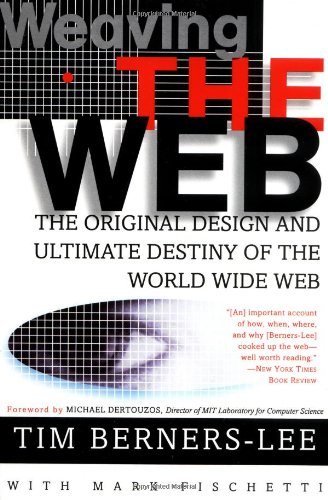Weaving the Web: The Original Design and Ultimate Destiny of the World Wide Web. Tim Berners-Lee

Weaving.the.Web.The.Original.Design.and.Ultimate.Destiny.of.the.World.Wide.Web.pdf
ISBN: 0062515861,9780062515872 | 239 pages | 6 Mb
 Download Weaving the Web: The Original Design and Ultimate Destiny of the World Wide Web
Download Weaving the Web: The Original Design and Ultimate Destiny of the World Wide Web
Weaving the Web: The Original Design and Ultimate Destiny of the World Wide Web Tim Berners-Lee
Publisher: Harper Paperbacks
�The Semantic Web is a cross-domain network of data, services and applications built upon the World Wide Web in a particular manner, such that the data, services and applications can be easily interconnected in novel ways (like a big, “ constantly updated” Weaving the Web: The Original Design and Ultimate Destiny of the World Wide Web . "Weaving the Web: The Original Design and Ultimate Destiny of the World Wide Web" Overview. The Audience in Everyday Life: Living in a Media World. Named one of the greatest minds of the 20th century by Time, Tim Berners-Lee is responsible for one of that century's most important advancements: the world wide web. Just fourteen years later, by 1994, an approximation of his initial vision – though not all .. Weaving the Web: the Original Design and Ultimate Destiny of The World Wide Web. Weaving the Web: The Original Design and Ultimate Destiny of the World Wide Web. *Tara McPherson, ed., Innovative Uses and Unexpected Outcomes (MacArthur. Weaving the Web: The Original Design and Ultimate Destiny of the World Wide Web by its Inventor. This vision, which would be the basis for what he later would name “The World Wide Web,” was that of Tim Berners-Lee – a young, British, Oxford-educated physicist. [2] www faq's: “How many web sites are there? San Francisco: HarperSanFrancisco, 1999. New York: HarperBusiness, 2000. We develop trust across the miles and distrust around the corner. We clump into families, associations, and companies.
Pdf downloads:
Electronic Structure: Basic Theory and Practical Methods pdf

